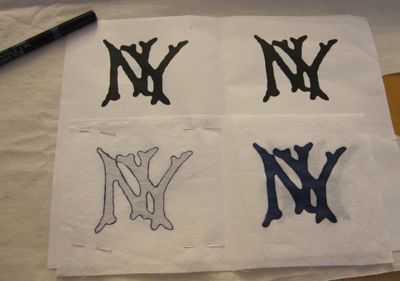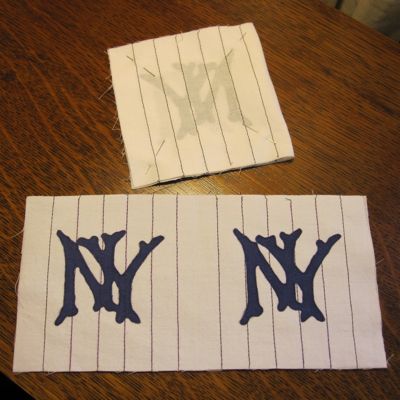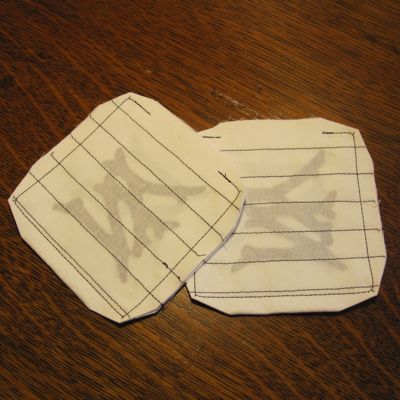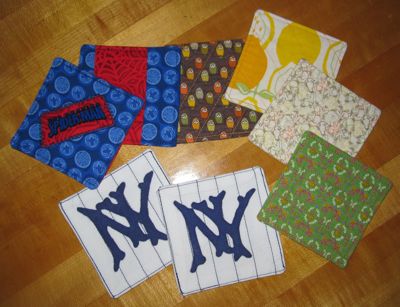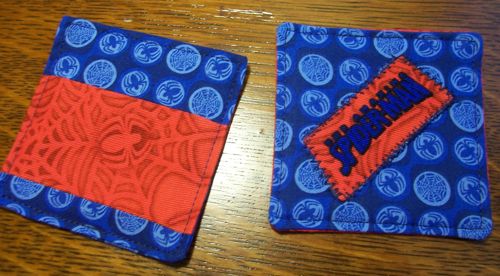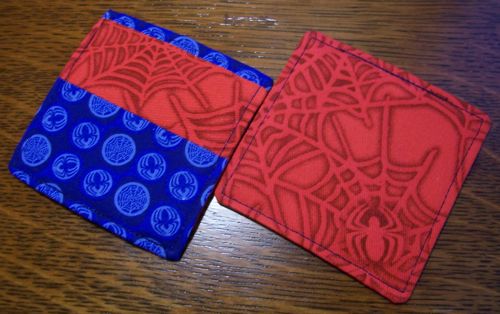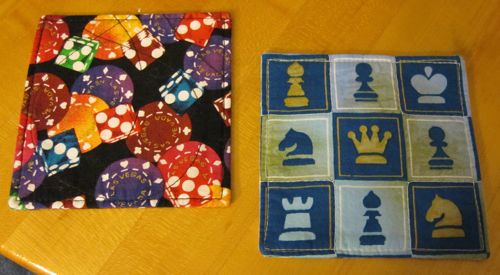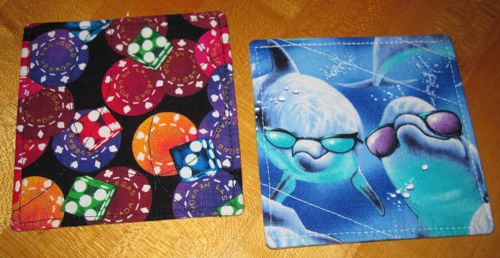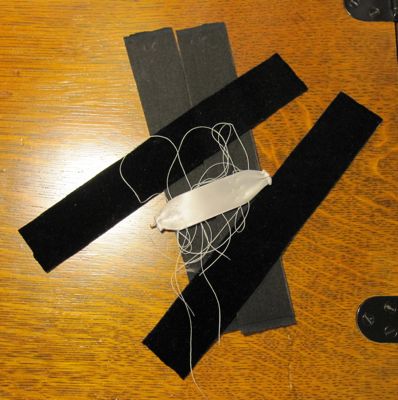
Burly Hot-Pants has been with me or one of my former roommates since my senior year of college. I have no idea what sort of action figure he is, except it is not one of the major brands. I bought him at Wal-Mart, I think, and he became our mascot. We had photo shoots like “Burly Storms the Capitol!” (of Virginia) and “Burly in the Lost World!” (after Cha Cha brought home a bucket of plastic dinosaurs). We immediately gave him dark roots and tattoos. I don’t remember when we cut his pants off into short shorts, which eventually died and had to be replaced with new short shorts (those, I made in summer 2005). Originally he hung from the wire shelf in our fridge, a Cha Cha innovation, with a gun in his free hand. The guns disappeared long ago, leaving him only his boots and ammo belt. Near the end of senior year I bought him some Barbie accessories, though the only one that survives is a pearl necklace.
For Nickel’s wedding he acquired a silver Sharpie bow tie, and the necklace became a bracelet or anklet. That may have been when we gave him lipstick and nail polish, though we may also have done that earlier. Alas, the lipstick bled all over his mouth.
Naturally, he needed some new accoutrement for Dana’s wedding. What would be more natural than a Chippendales-style tuxedo jacket and cummerbund? He ditched his brown hot pants altogether in favor of his black plastic codpiece, but kept the boots and ammo belt (you never know what situations may arise at a wedding).
As BHP’s personal tailor and photographer, I present to you: Silver Tie Burly.
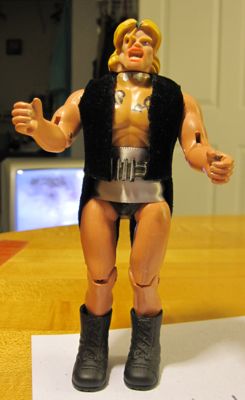
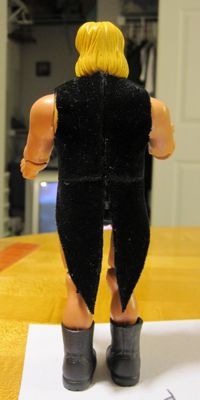
You may be able to see in the back that I was watching Quest for the Mighty Sword, the greatest movie ever made.
As tough as he is, Burly has a softer side.
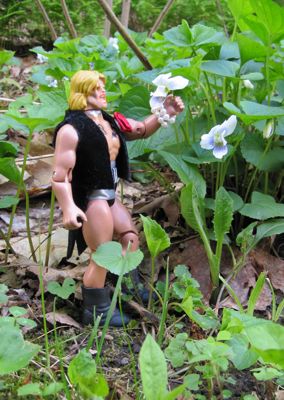
As you can probably tell, the cummerbund in the sneak peek picture was not the final cummerbund; I ended up just taking a length of ribbon and Stitch Witchery-ing velcro on each end.
Construction notes: I started by cutting a straight line across a strip of velvet and lining the bottom up with the top of BHP’s codpiece and the inside with the center of his chest or back, and gradually cutting the front and back pieces to shape. I used fusible interfacing both to stabilize the velvet and in place of sewing the seams (so it is far from the sturdiest item I’ve ever made). After cutting four pieces, to which tails would be attached, I realized it would be better to make two pieces that went around under his arms on each side and only had to be ironed together at the shoulder and center back. I also realized the heavier of the two interfacings I’d gotten to try (both Pellon, but one a lightweight standard-style interfacing and the other a sheer tricot) was the only one that worked – the tricot had too much stretch, which would be desirable in other settings but not when using it like tape. So I cut new pieces from wider velvet and used my tailor’s ham to aid in ironing (I could have used a smaller one! Perhaps I’ll make one). For the tails, I attached a strip of velvet to one side of the back hem, cut it to a nice shape, put another piece against it wrong sides together and cut it to match, and then ironed it on. I decided not to attempt a collar; I rather like the military-vest look of the front as it is, but admittedly the omission had more to do with thinking it would be difficult.
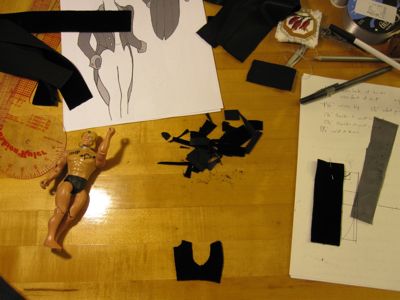
In the picture you can also see my primary inspiration.
